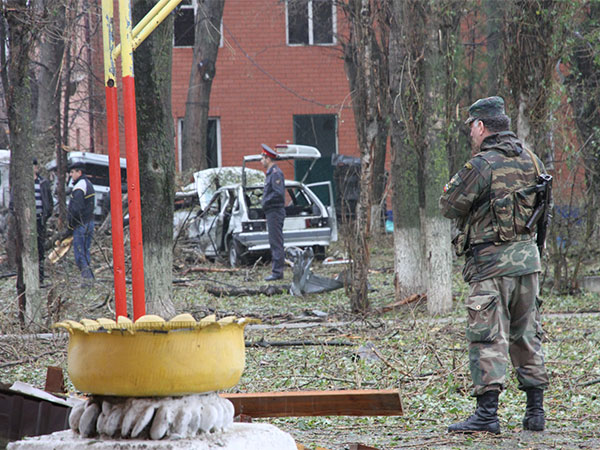Kingston [Jamaica], July 4: Hurricane Beryl churned menacingly over Jamaica on Wednesday afternoon, after uprooting trees, ripping off roofs and destroying farms as it forged a destructive, water-soaked path across smaller Caribbean islands over the past couple days.
The death toll from the powerful Category 4 hurricane rose to at least nine, but it is widely expected to rise as communications come back online across drenched islands damaged by flooding and deadly winds.
In Jamaica, the storm hit the island's southern coast on Wednesday afternoon, pummeling communities with intense wind and rain as emergency groups evacuated people living in flood-prone communities.
"It's terrible. Everything's gone. I'm in my house and scared," said Amoy Wellington, a 51-year-old cashier who lives in Top Hill, a rural farming community in Jamaica's southern St. Elizabeth parish. "It's a disaster."
Almost 500 Jamaicans were in shelters by Wednesday afternoon, Prime Minister Andrew Holness told reporters, urging people in high-risk areas to move.
"We have not seen the worst of what could happen," Holness said. "We can do as much as we can do, as (is) humanly possible, and we leave the rest in the hands of God."
The airports in the Jamaican capital, Kingston, and tourist-popular Montego Bay were closed throughout the day.
The loss of life and damage wrought by Beryl underscores the consequences of a warmer Atlantic Ocean, which scientists cite as a telltale sign of human-caused climate change fueling extreme weather that differs from past experience.
Ralph Gonsalves, prime minister of St. Vincent and the Grenadines, one of the hardest-hit areas in the eastern Caribbean, said in a radio interview that the country's Union Island was "flattened" by Beryl.
"Everybody is homeless . It is going to be a Herculean effort to rebuild."
Speaking to state media, Nerissa Gittens-McMillan, permanent secretary at St. Vincent and the Grenadines' agriculture ministry, warned of possible food shortages after 50% of the country's plantain and banana crops were lost, with significant losses also to root crops and vegetables.
In Kingston, streets were quiet as anxious residents hunkered down after spending the morning stocking up on essential supplies.
Jamaicans braced for electricity cuts later on Wednesday, according to a power company official, with roads near the coast already washed out as steady rain continued to fall and winds picked up in the capital.
In St. Elizabeth, local politician Joseph Patterson said the power was out and the situation was "getting gradually worse by the minute," with aggressive winds bringing down trees.
By Wednesday afternoon, the well-defined eye of the spiraling hurricane was located about 65 miles (105 km) southeast of Kingston, according to the U.S. National Hurricane Center (NHC), though its outer rings were already lashing much of the island with a population of nearly 3 million.
Beryl is packing maximum sustained winds of 140 miles per hour (225 kph).
The force of the winds is expected to weaken somewhat in next day or two, according to the NHC, though it cautioned that Beryl will remain at or near major hurricane strength as it moves on to the Cayman Islands.
"Life-threatening flash flooding and mudslides from heavy rainfall are expected over much of Jamaica and southern Haiti through today," the NHC said in a post, adding that dangerous winds and storm surge are also expected in the Cayman Islands through early Thursday.
The center added that a hurricane warning was in effect for Jamaica, the Cayman Islands, as well as the eastern coast of Mexico's Yucatan peninsula, including for the country's top beach resort Cancun.
Source: Fijian Broadcasting Corporation

